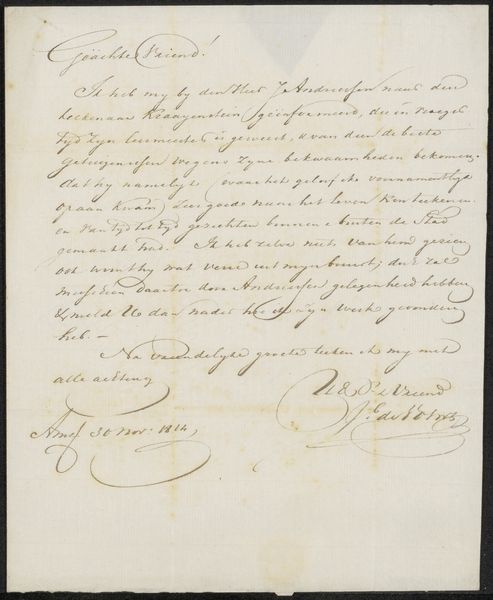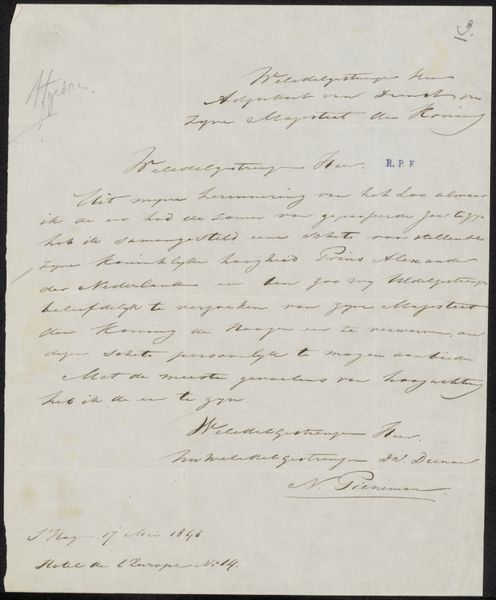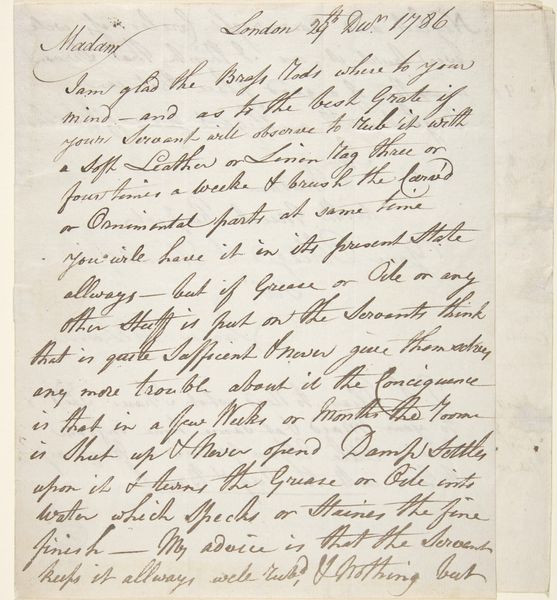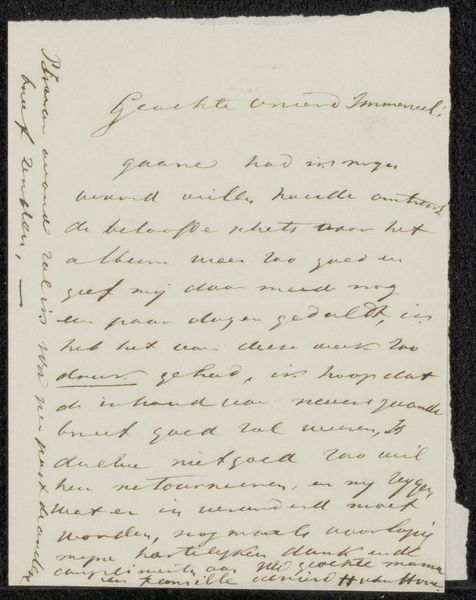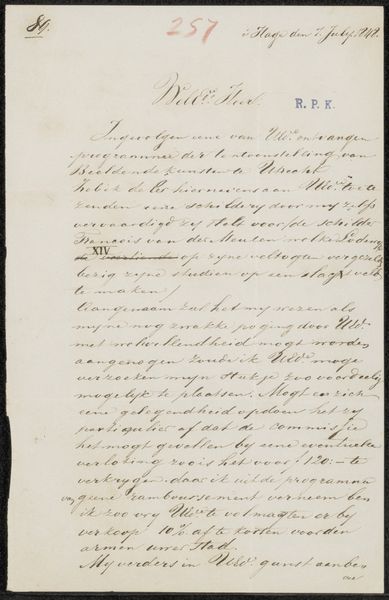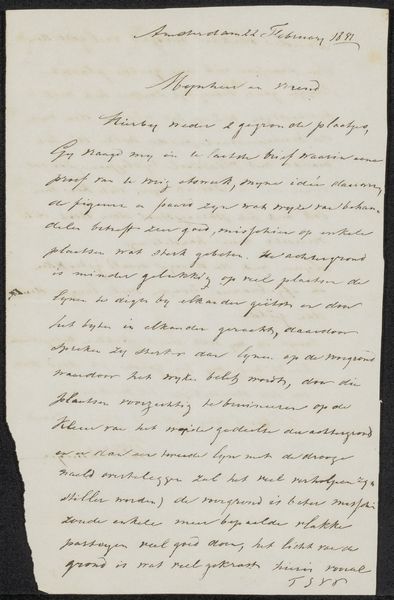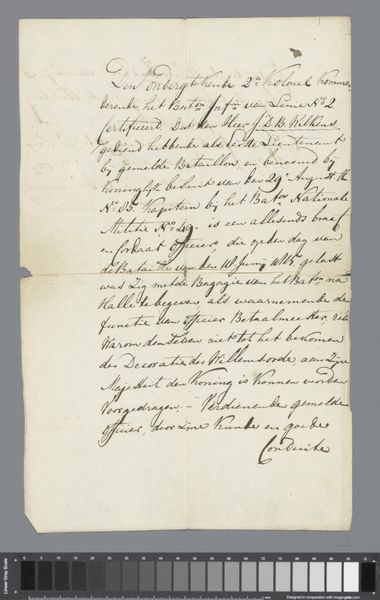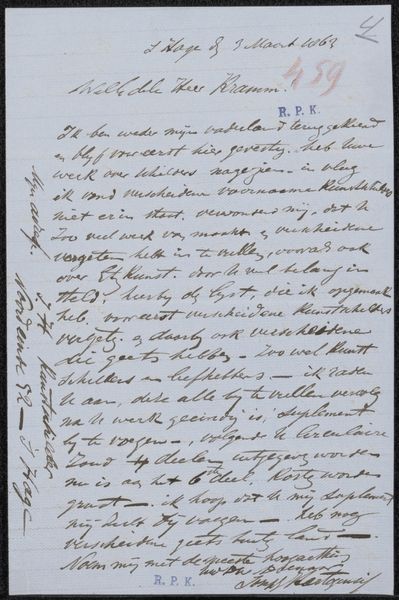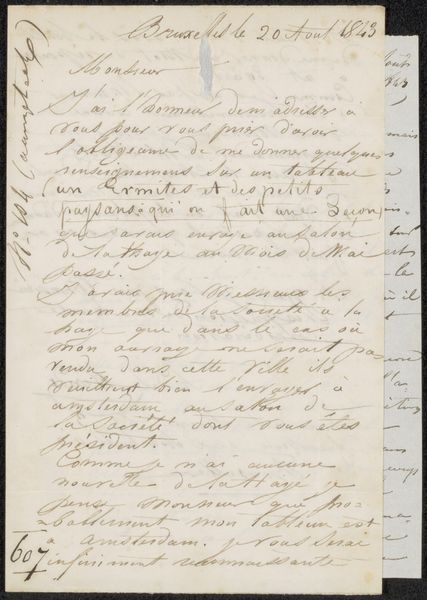
drawing, paper, ink
#
portrait
#
drawing
#
paper
#
ink
Copyright: Rijks Museum: Open Domain
Editor: This drawing from between 1776 and 1822, titled "Brief aan Adriaan van der Willigen," is by Gerard van Spaendonck, created with ink on paper. It’s essentially a handwritten letter… I wonder about the relationship between the artist and the person he was writing to. What jumps out at you? Curator: Immediately, I'm struck by the paper itself. The fibres, the aging—how did its production shape its availability and therefore its usage? The fact that it's a letter dictates it's function: a transaction, a conveying of something needed or wanted. Ink too. What would its cost have been? What labour was involved in its crafting? That dictates the nature of this exchange, don't you think? Editor: Definitely. I hadn’t considered the economics of materials like that. Curator: Exactly. Letters in this era weren't as easily produced or distributed, as today's electronic messaging is. Look at the handscript: its elegance and consistent penmanship reveals training, expertise. Also it signifies literacy; the access to and power of education. It’s both a utilitarian object *and* a display of skill. Consider then, the implications about class, labour and access within 18th-century society that such skill demonstrates. Editor: So, analyzing the materials gives us a broader understanding of its social context? Curator: Precisely. It compels us to question how the art world intersected with wider social systems of that time. The material's provenance matters— where it came from, and for what or whom was it made? The work’s context helps decode an understanding of both its function *and* meaning. Editor: That makes so much sense. I will never look at works on paper in the same way! Curator: Nor should you! Now consider… what work does the paper itself do in reinforcing, or even undermining, Van Spaendonck’s intentions as the writer?
Comments
No comments
Be the first to comment and join the conversation on the ultimate creative platform.
